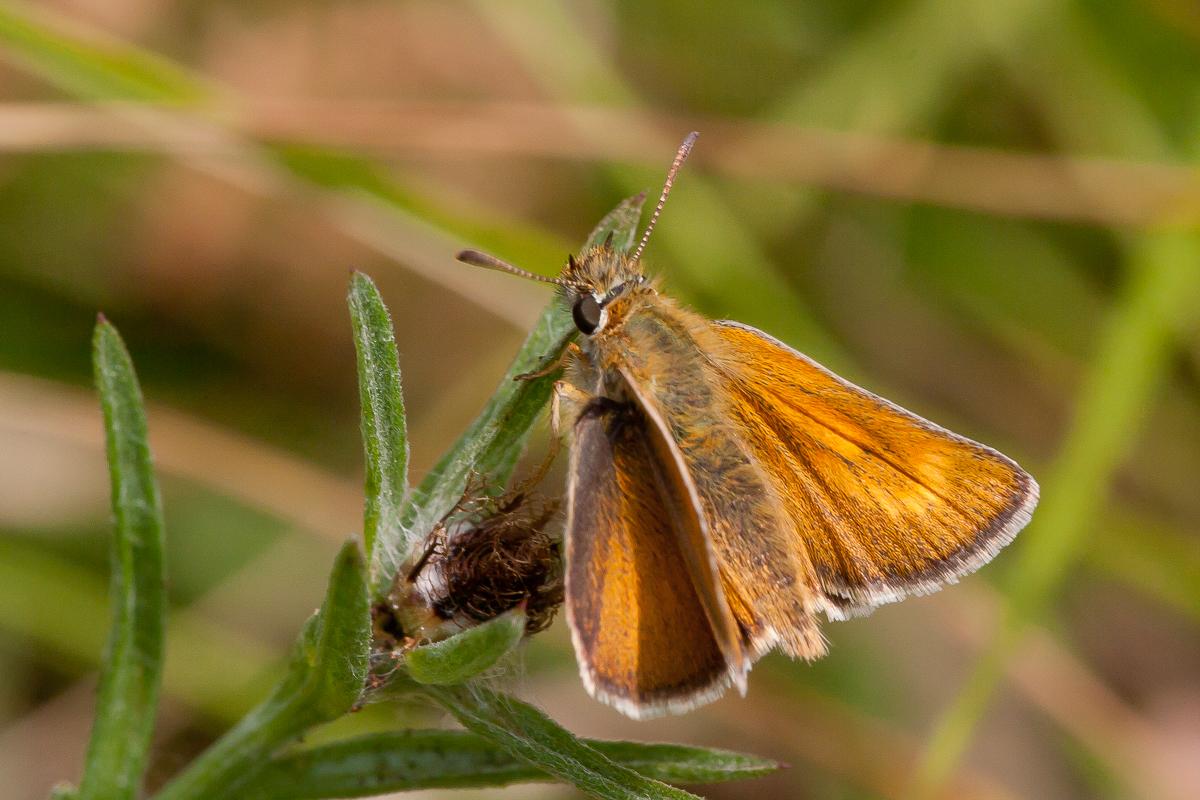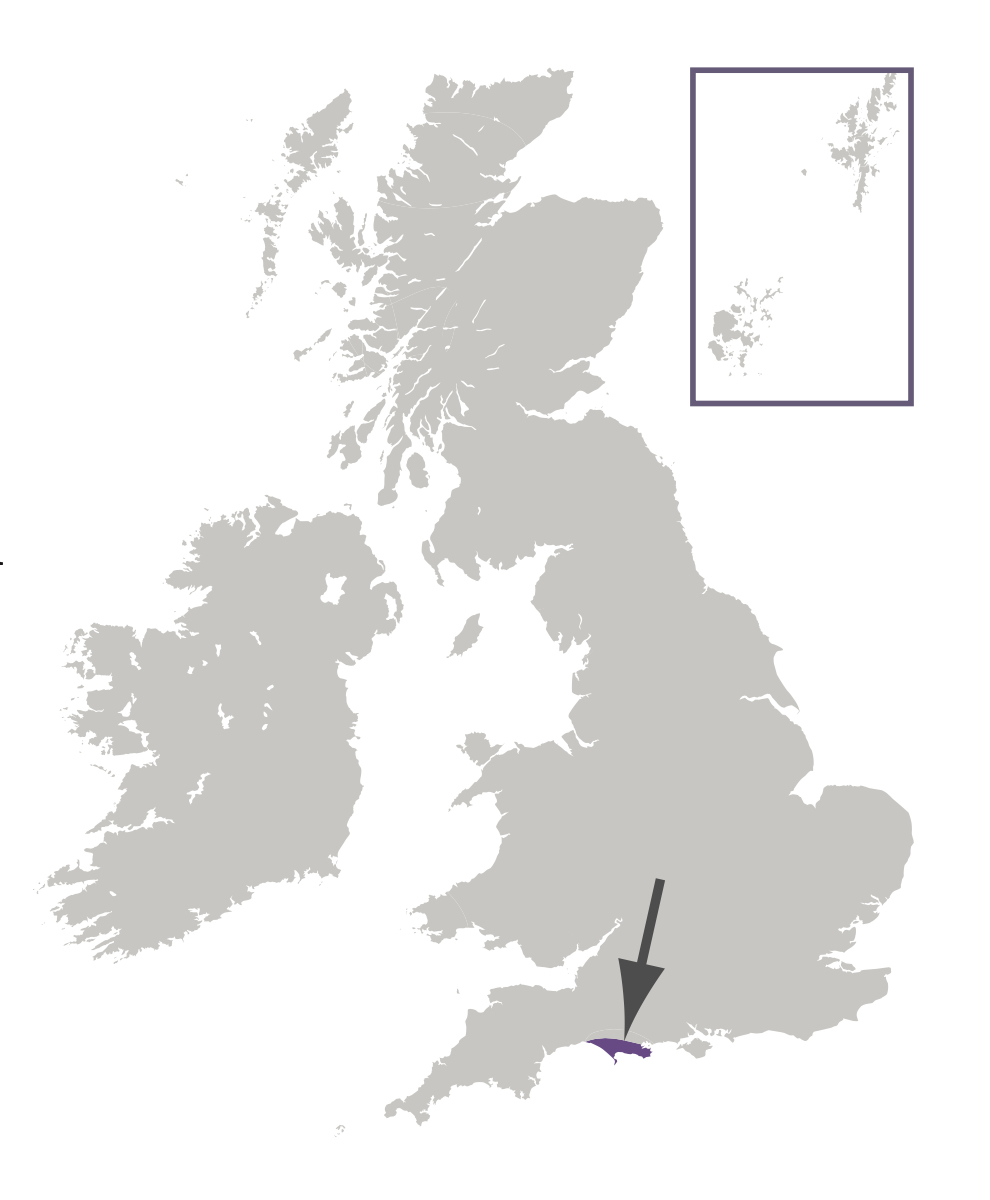
Photo © Peter Eeles
The Lulworth Skipper was first discovered in 1832 on a stretch of coast around the village of Lulworth in Dorset. This species forms discrete colonies, some of which can be very large, containing many thousands of individuals. The female is quite recognisable from the pale orange crescent on her forewings, which is either lacking or very feint in the male. The male is darker in colour, and has a sex brand on each forewing made up of a very fine line of scent scales. As its name suggests, this distribution of this species is centred around Lulworth in Dorset, between Weymouth and the Isle of Purbeck. It is absent from the Channel Islands. In Britain, this species is at the northern limit of its range, and is rarely found more than 5 miles from the coast. However, this is not a maritime species, except in Britain.
Like many other skippers, the rapid flight of this butterfly makes it difficult to track when darting between flowers, favourite nectar sources including Thistles and Marjoram. Sunny conditions are needed to see this butterfly, since the species is inactive in dull weather. When egg-laying, the female will alight on a stem of flowering Tor-grass, and then move backwards down the stem, probing the sheath as she moves. There is a preference for taller plants. When a suitable opening in the furled sheath is found, she will lay up to 15 eggs inside, with 5 or 6 being typical.

Most colonies are found on south-facing, sheltered slopes, where the tall patches of the foodplant, Tor-grass, suitable for egg-laying females, grow. Colonies are most-often encountered on chalk or limestone grassland where Tor-grass is abundant.
Adults feed primarily on Common Bird's-foot-trefoil (Lotus corniculatus), Greater Knapweed (Centaurea scabiosa), thistles (Carduus spp. and Cirsium spp.) and Wild Marjoram (Origanum vulgare).
The primary larval foodplant is Tor-grass (Brachypodium rupestre).
